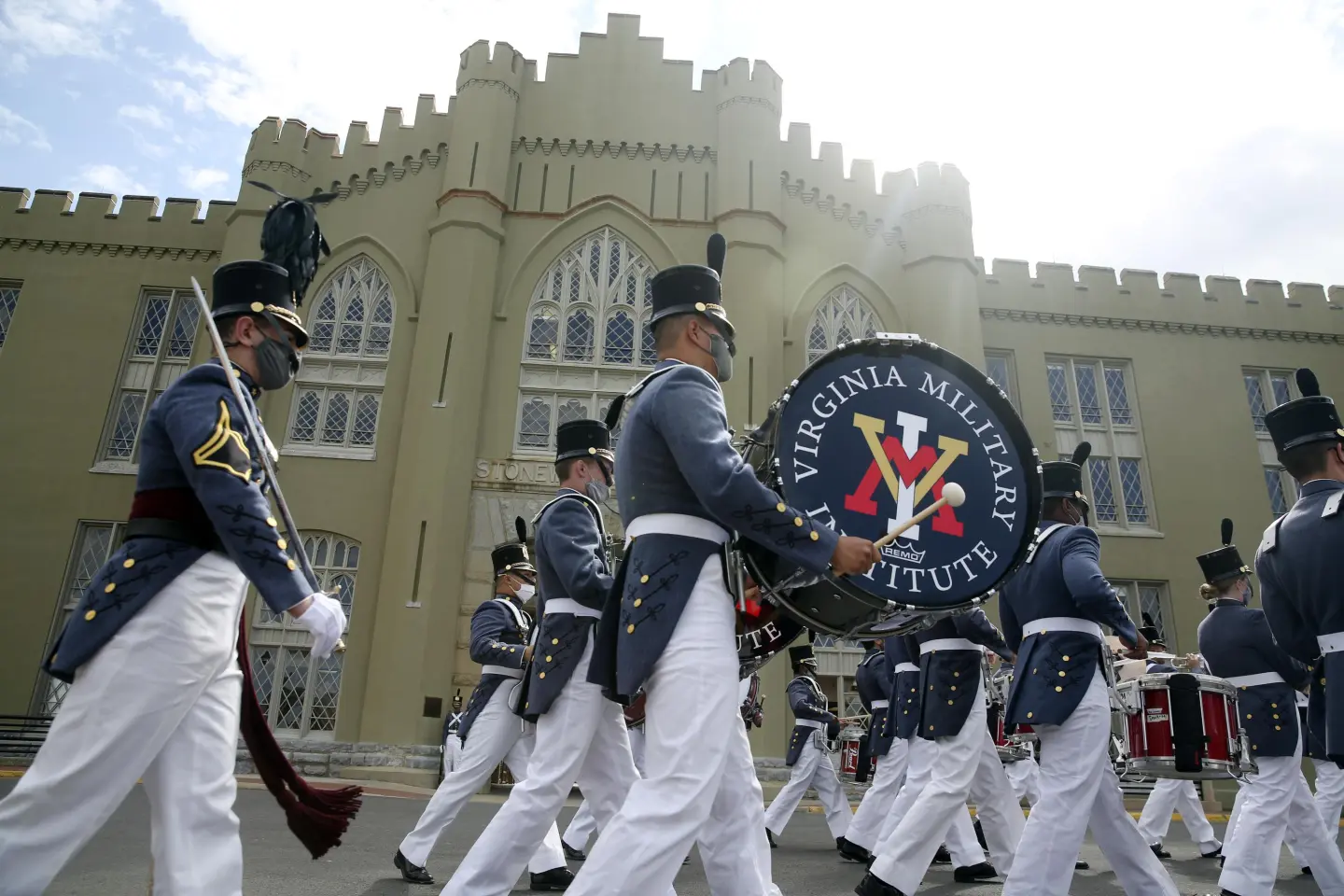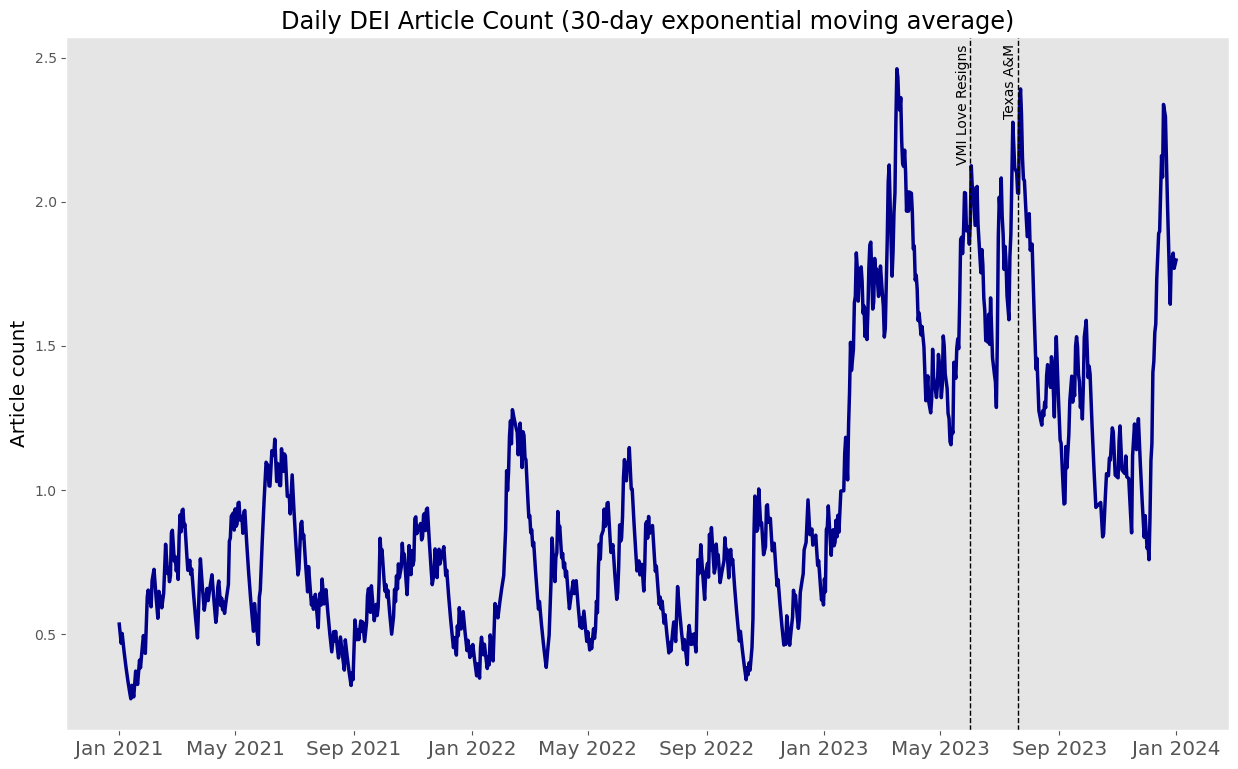DEI Scandals in the Media
Denigrating “DEI hires” in public institutions

Many companies and institutions that once embraced Diversity, Equity, and Inclusion initiatives have recently turned away from them, often in the face of public backlash and political controversy. The media have reflected and reinforced a broader negative shift in how DEI is perceived in the workplace and in higher education. Perhaps most pointedly, some coverage of “scandals” not only draws attention to institutions but also shines a spotlight on the specific people targeted by anti-DEI actions.
These individuals, who are mostly people of color and women, are sometimes denigrated as “DEI hires”, which subjects them to reputational damage and threatens their jobs. This dynamic was especially apparent through incidents at the Virginia Military Institute (VMI) and at Texas A&M University. At VMI, Major General Cedric Wins was appointed to address the institution’s racist culture, but he was one of the first to go when the public resistance came. At Texas A&M, Kathleen McElroy was originally hired to lead the journalism program, but after internal backlash from members of the university’s board of regents, the terms of her job were repeatedly downgraded, from a tenured position to a five-year contract without tenure, and then to a one-year at-will appointment, ultimately leading her to reject the offer.
When DEI controversies make headlines, how does media coverage of the individuals involved compare to coverage of the institutions themselves, and what consequences do the individuals face? To answer this question, we analyzed 1,855 articles mentioning “Diversity, Equity, and Inclusion”, or “DEI” from January 1, 2016 through December 31, 2024 across four major US publications: The New York Times, The Washington Post, The Wall Street Journal, and USA Today.
To better understand the nature of DEI coverage, we first used topic modeling analysis, a computational tool that allows us to see which keywords and stories were especially prominent. Terms like “VMI” and “McElroy” appeared consistently, suggesting concentrated news attention around two particular events.
We confirmed that their occurrences coincided with spikes visible in the timeline below: “VMI” refers to the Virginia Military Institute’s DEI controversy and leadership fallout; “McElroy” references the Texas A&M scandal involving the attempted hiring and subsequent withdrawal of the journalism professor. This pattern indicates that these article spikes reflect not just general discussions of DEI, but concrete flashpoints linked to specific individuals.

We took a closer look at the Virginia Military Institute DEI scandal, which started in early 2021 after a state-ordered report condemned the school for extensive institutional racism and sexism. In response, Major General Wins, VMI’s first Black superintendent, was appointed to address the issues of racism at VMI. However, his DEI efforts, which included removing a Confederate General Stonewall Jackson statue, establishing a diversity committee, appointing VMI’s first chief diversity officer, and creating cultural awareness training programs, generated significant pushback.
When VMI, under the leadership of Major General Wins, requested an additional $6.1 million to fund such reforms, it was met with opposition from a “well-connected White alumnus.” One alum, Roger Jarrell, a former Trump administration official, wrote, “General, with all due respect, stay in your own lane… Leave politics to the politicians. Run the Institute.” Despite all the public criticisms, the institution failed to defend Major General Wins or chief diversity officer Jamica Love, who were both referred to as “‘woke’ hires.” The controversy ended with Love resigning and with the board voting not to renew Wins’ contract. The DEI blowback ultimately cost both Wins and Love their positions, demonstrating how individuals in charge of DEI reforms face consequences, while VMI as an institution remained unscathed.
Resistance to DEI-related appointments was not unique to the Virginia Military Institute. In June 2023, Texas A&M University offered Kathleen McElroy a tenured position as the new director of the journalism program. Matthew Poling, who was president of a conservative alumni group, is one of many who disapproved of McElroy’s previous DEI work, claiming “‘I think identity politics have done a lot of damage to our country, and the manifestation of that on campus, the D.E.I. ideology, has done damage to our culture at A&M.’”
McElroy’s original contract was changed several times, ultimately leading to her refusing the revised offer, opting to stay at the University of Texas at Austin. In August 2023, Texas A&M reached a $1 million settlement with McElroy over admitted hiring process mistakes and provided an apology, to which she responded with hopes that the settlement would “reinforce A&M’s allegiance to excellence in higher education and its commitment to academic freedom and journalism.”
These two examples do not reflect the behavior of all institutions, but they showcase how DEI efforts can generate mediatized conflict. In both of these cases, and others, the individuals involved were highly educated, qualified people of color who were pushed out or distanced from their institutions to appease alumni and financial stakeholders. This reflects a broader media narrative where the face of “controversial” DEI efforts is typically a person of color. Their identity makes them more vulnerable to public scrutiny, as critics are quick to label them as “DEI” or “woke” hires.
These scandals are publicized in the media because they reinforce existing prejudices that DEI is performative, that institutions prioritize identity over merit, and that DEI initiatives do more harm than good. Individuals involved are often isolated and discredited, which ultimately distorts the public’s perception of DEI and takes the focus away from how DEI initiatives could be used as a tool for establishing equity in institutions.
—Eva Janairo and YiJun Kim
Methodological note: We examined all 1,855 articles containing “Diversity, Equity, Inclusion” or “DEI” published between January 1, 2016 and December 31, 2024 in The New York Times, The Washington Post, The Wall Street Journal, and USA Today. We used topic modeling analysis to find keywords that allowed us to identify prominent events. We used keyword-in-context (KWIC) analysis to examine sentences related to the topics. For additional information regarding our methods, see here. Photo credit: Heather Rosseau/The Roanoke Times via AP, File.